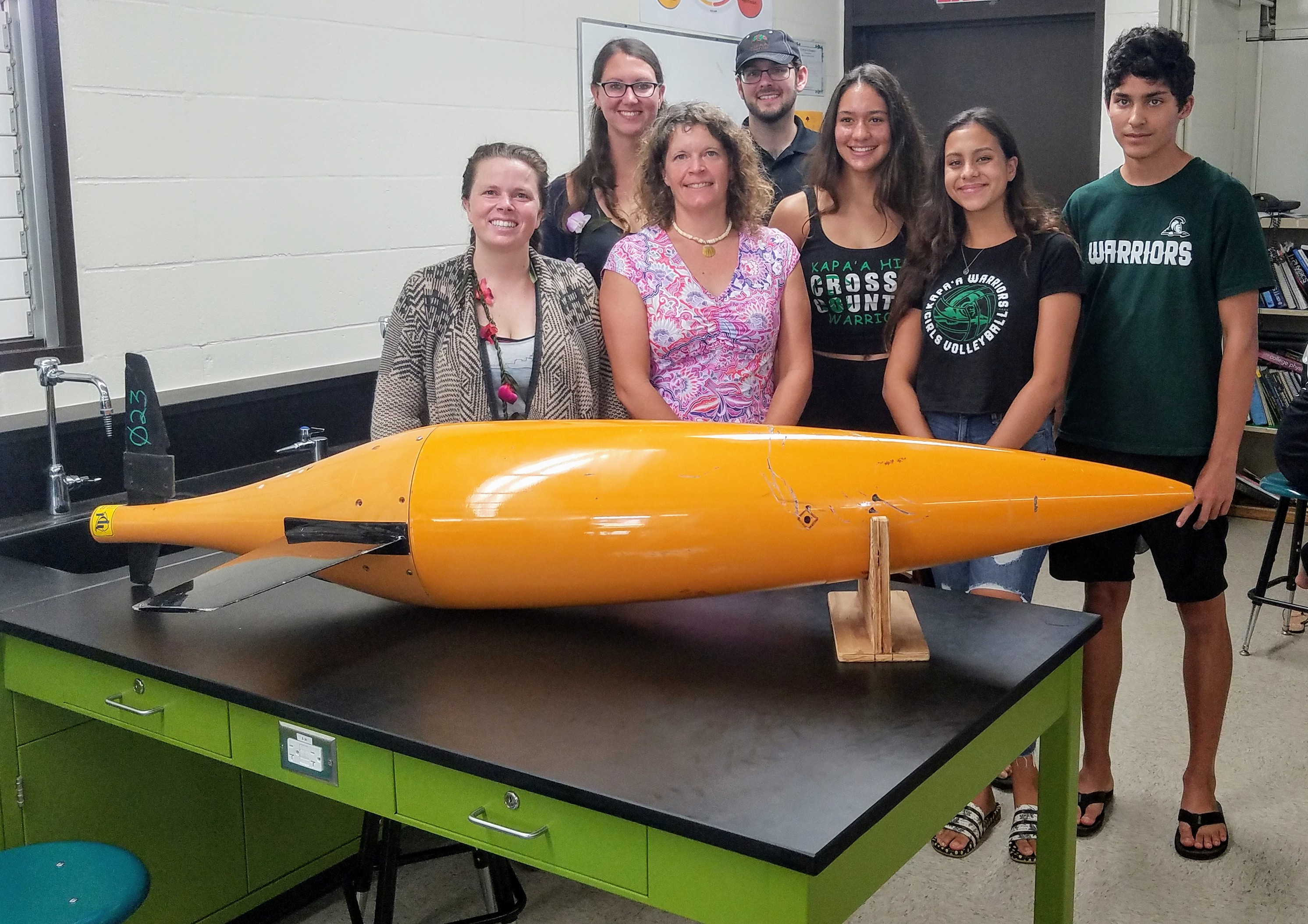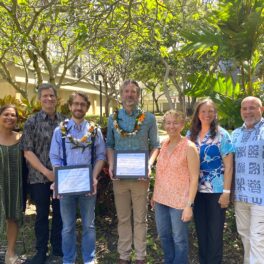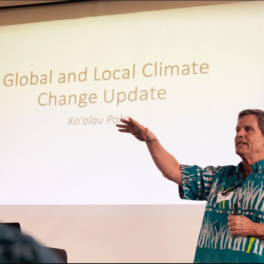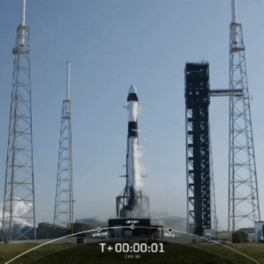Oceanography graduate students bring their science to Kauai high schools
 Kelly Pearson and Amanda Ziegler with students and faculty at Kapa'a High School. Credit: Nancy Borilez.
Kelly Pearson and Amanda Ziegler with students and faculty at Kapa'a High School. Credit: Nancy Borilez.
Two oceanography graduate students from the University of Hawai‘i at Mānoa School of Ocean and Earth Science and Technology (SOEST) visited three high schools on Kauai last week to share their research and hands-on activities. Nearly 300 students at Waimea, Kauai and Kapa’a High Schools learned about ocean motion, currents and circulation; deep-sea biology; and technology used to explore the vast ocean.
Kelly Pearson, who studies physical oceanography, brought a SeaGlider to the students to show how she uses the ocean robots to make measurements in remote and deep parts of the ocean. Students accessed data collected from around the Pacific with this technology and discussed how the information is used to determine ocean circulation. By creating Cartesian divers—a hand-held demonstration of the direct relationship between volume and density—students explored how SeaGliders, and other ocean robotic equipment, dive deep and resurface. Pearson also shared some of the challenges of working in the cold, dark, salty and high pressure depths, where scientific instruments can sometimes be mistaken for food.
After Pearson’s presentation, students shared their excitement and new realizations. “Wow, you can really study this at the University of Hawai‘i?” asked one student. “I can’t believe you get to travel when you study science,” said another.
Students also learned from Amanda Ziegler, who studies deep-sea ecosystems, how the physical characteristics of the deep-sea—lack of light, low temperature, high pressure, low food availability, and more—force many biological adaptations and the distribution of various ocean creatures. During a hands-on activity, Ziegler and the students viewed footage collected using a remotely operated vehicle during an ongoing research project at UH Mānoa. They identified and counted various lifeforms and discussed how that information is used to compare deep sea ecosystems in different locations. The activity focused on animals inhabiting abyssal plain regions of the Pacific Ocean that are targeted for deep-sea manganese nodule mining.
Ziegler’s presentations were certainly an eye-opener for some students. One student exclaimed, “I didn’t know anything lived down there!”
“Exposing the students to the diverse and interesting creatures in the deep sea emphasizes the need for basic scientific information about this region prior to mining in this critical habitat,” said Ziegler. “We want to use our research to inspire the next generation of scientists—to learn, to share their knowledge and to be responsible stewards. It is important to engage students from other islands who are unable to attend other outreach events we offer at the UH Mānoa campus and encourage teaching and outreach collaborations across the Hawaiian Islands.”
“My hope when we visit schools is that we can show students the opportunities for college, and more specifically ocean research, available in Hawai‘i,” said Pearson. “We want to share our first-hand perspective on science and ocean research at UH Mānoa.”
“Kelly and Amanda are excellent ambassadors of science and the UH Mānoa Department of Oceanography,” said Niklas Schneider, chair of the SOEST Department of Oceanography. “Hawaii students have a deep affinity for the ocean. We seek to inspire them to study and see themselves unlocking its mysteries.”
Additional information was provided to the teachers, including various lesson plans, information about build an ROV and ROV competitions, to encourage future oceanography and technology-based lessons and activities.
Pearson’s and Ziegler’s travels were funded by the National Weather Service Pacific Region Fellowship and the Department of Oceanography.
Read more in The Garden Isle and the Kapa’a High School newsletter.



